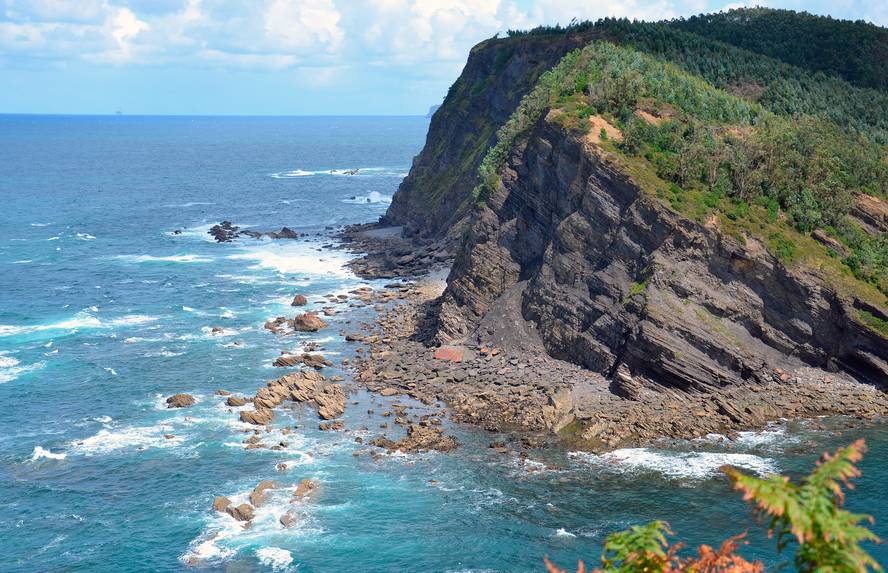They clarify how the so-called black flysch of Armintza emerged.
UPV geologists have rebuilt the oceanic conditions that led to the formation of the black flysch of Armintza, based on the microfauna present in the sediment, specifically between the Albiense and Cenomiense period (113-94 million years ago).
In fact, sedimentary microfauna (benthic and planktonic foraminers and oysters) are significant witnesses of their time and place. Thus, analyzing the composition and distribution of these species, researchers have completed and detailed what they already knew about the formation of black flysch in Armintza.
Among other things, they have calculated that at that time the sea depth was about 600 metres. It is stated that black flysch sediments are rich in organic matter and that most organisms (more than 90%) are planktonic foraminers. This means, as they have explained, that at the time of the accumulation of these sediments there was a mass of oxygenated water on the surface over a mass of slow water very low in oxygen. In the next phase, however, the proliferation of benthic organisms is detected and planktonic formers of deeper water appear. Thus, they conclude that the water ceased to be immobile, although it still presented some oxygen shortage in the background.
In fact, the dark color separating flysch from Armintza is related to lack of oxygen. The study has been published in the journal Continental Shelf Research.






